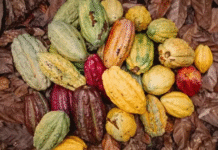
PepsiCo has announced two new ambitious nutrition goals as part of PepsiCo Positive – the company’s end-to-end strategic transformation – which aim to reduce sodium and purposefully deliver important sources of nutrition in the foods consumers are reaching for.
PepsiCo aims for at least 75% of its global convenient foods portfolio volume to meet or be below category sodium targets by 2030.
Excess sodium intake is a leading risk factor for diet-associated disease and disability, prompting global public health authorities to call on the food industry to reduce sodium in their products. The World Health Organization (WHO) recommends less than 2000 mg of sodium per day for adults. PepsiCo is setting a new sodium reduction goal, with category targets that consider guidance from public health experts including the World Health Organization and are approximately 15-30% lower than the company’s current target for key convenient food categories.
The company says its new sodium goal aims for a 15% sodium reduction in its US Lay’s Classic Potato Chips, which would result in a sodium level of 140 mg per 28g serving. According to the U.S. National Health and Nutrition Examination Survey, the sodium intake in daily diets from savory snacks is currently around 3%.
Diverse Ingredients
Increased consumption of diverse ingredients, such as legumes, whole grains, plant-based proteins, fruits and vegetables, and nuts and seeds, can help promote a more nutritionally diverse diet.
The company aims to deliver 145 billion portions of diverse ingredients annually in its global convenient foods portfolio by 2030. Each portion will provide approximately 10% of the suggested daily amount of a diverse ingredient1.
“We are in a constant cycle of innovation to reimagine the foods we make and how we make them so we can bring better choices to our consumers, without ever compromising on taste,” said René Lammers, executive vice-president and Chief Science Officer for PepsiCo. “Consumers enjoy our products more than one billion times a day, which provides an opportunity – and the privilege – to have an impact. We set a high bar to improve the nutritional profile of our products, and these new goals reaffirm our ambitions.”
Since 2015, PepsiCo has been on a journey to improve its portfolio, charting progress against a set of 2025 nutrition targets, made possible through the cutting-edge efforts of more than 2,600 Research & Development associates across 13 R&D centers around the world, including:
Innovating on the Farm: Agricultural experts partner with farmers to grow potatoes that have the ideal flavor needed to deliver the savory taste consumers enjoy.
Maintaining Taste: Seasoning experts identify ingredients and study salt crystal shapes and sizes to optimize flavor while using less sodium.
Creating Flavor: Food developers design optimal flavors using seasonings, herbs, spices and dairy that contain less sodium overall.
Lammers continued, “An industry-wide approach is necessary to meaningfully reduce sodium intake and introduce important sources of nutrition to help diversify diets. And it’s important for us to take a leadership position to help be a catalyst for change.”
PepsiCo generated more than $86 billion in net revenue in 2022, driven by a complimentary beverage and convenient foods portfolio that includes Lay’s, Doritos, Cheetos, Gatorade, Pepsi-Cola, Mountain Dew, Quaker, and SodaStream. PepsiCo’s product portfolio includes a wide range of enjoyable foods and beverages, including many iconic brands that generate more than $1 billion each in estimated annual retail sales.
IndiFoodBev — authentic, impactful and influential
An English-language food and beverage processing and packaging industry B2B platform in print and web, IndiFoodBev is in its third year of publication. It is said that the Indian food and beverage industries represent approximately US$ 900 billion in revenues which implies more than 20% of the country’s GDP. Eliminating the wastage on the farmside can help to deliver more protein to a higher number of the population apart from generating sizable exports. The savings in soil, seeds, water, fertilizer, energy and ultimately food and nutrition could be the most immense contribution that country is poised to make to the moderation of climate change.
To improve your marketing and grow sales to the food and beverage processing and packaging industry, talk to us. Our research and consulting company IppStar [www.ippstar.org] can assess your potential and addressable markets in light of the competition. We can discuss marketing, communication, and sales strategies for market entry and growth.
Suppliers and service providers with a strategy and budget for targeted marketing can discuss using our hybrid print, web, video, and social media channels to create brand recognition linked to market relevance. Our technical writers are ready to meet you and your customers for content.
The second largest producer of fruit and vegetables in the world is continuously expanding processing capacities and delivery systems with appropriate innovative technologies. We cover product and consumer trends, nutrition, processing, research, equipment and packaging from farm to thali. Get our 2025 media kit and recalibrate your role in this dynamic market. Enhance your visibility and relevance to existing markets and turn potential customers into conversations. Ask for a sample copy of our bi-monthly in print or our weekly IndiFoodBev eZine each Wednesday.
For editorial info@ippgroup.in — for advertisement ads1@ippgroup.in and for subscriptions subscription@ippgroup.in
Naresh Khanna – 10 February 2025
Subscribe Now











